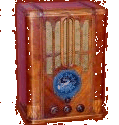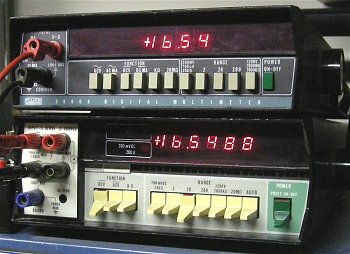|





































|
 |

Digital Multimeters - DMMs
What is a half digit?
When looking at the specifications of a DMM (Digital MultiMeter), the display of the meter is often described as having a 3½ or
4½ digit display.
So what is this "Half Digit" they talk about?
In simple terms a ½ digit is not really half of a digit. A full digit will display a number from 0 to 9.
A ½ digit does not stop at 5. A ½ digit will signify only two
numbers, 0 and 1. When you see ½ in the specifications, the number on the top of the
fraction is the highest number the digit will display and the number on the bottom of the fraction
is how many numbers or values the digit can represent.
So if we look at a ½ digit, the fraction shows it will display up to "1" (signified by the 1 on the top of the fraction) and will be able to display two values, in this case "0" and "1" (signified by the 2 on the bottom of the fraction).
On a DMM with a ¾ digit display, the ¾ digit would display up to the value of three and will display four values, 0, 1, 2, and 3.
Note: On most meters if the ½ digit has a value of 0, the digit would most likely be off. It does not usually display a "0".
|
 |
Half Digit Displays
The Fluke 8000A (top) is 3½ digits and the 8800A (bottom) is 5½ digits.
The first digit on the left (to the right of the plus sign) can only display a "1" or be off signifying "0".
|
|
|



